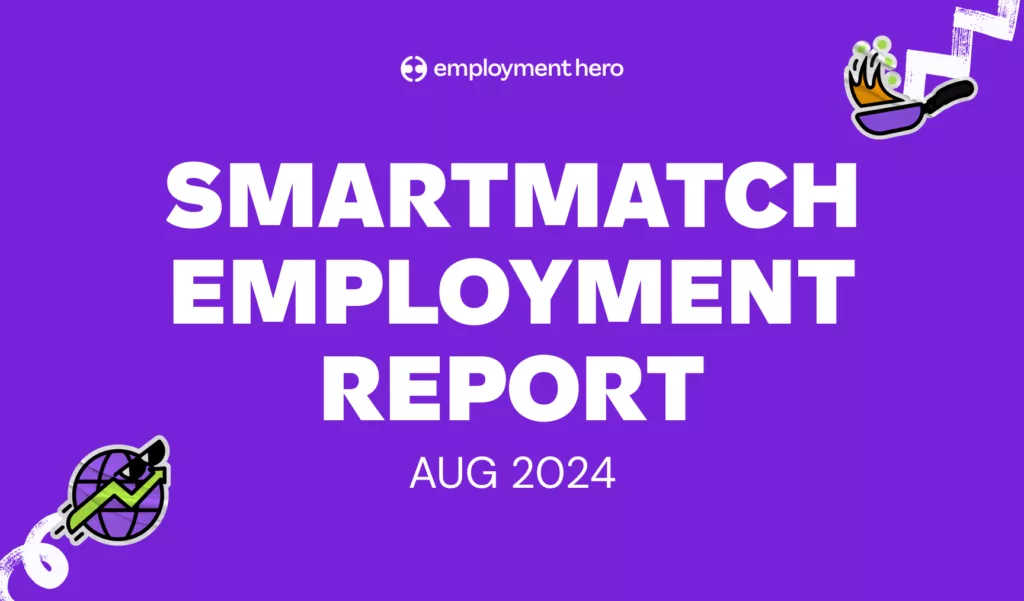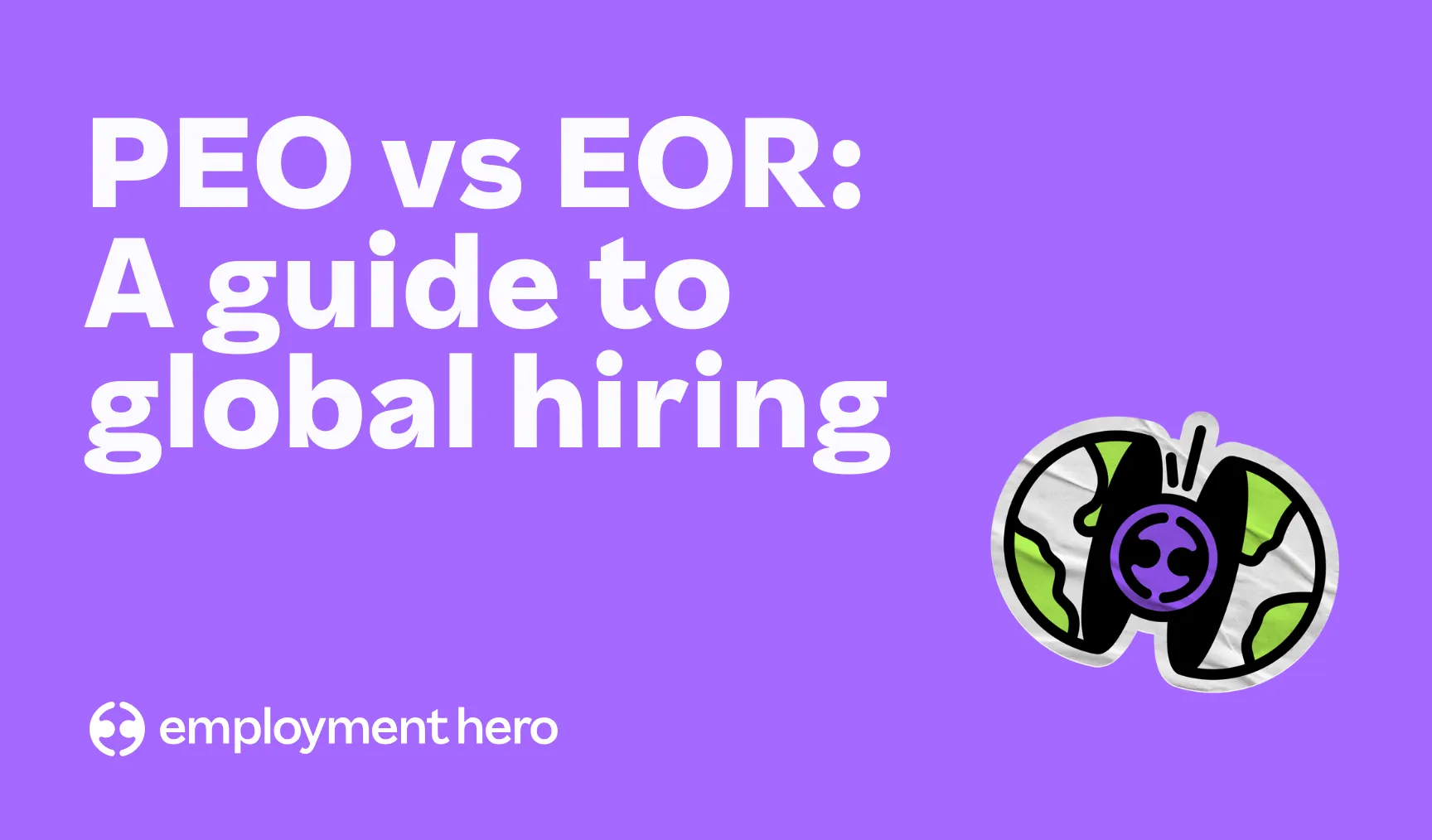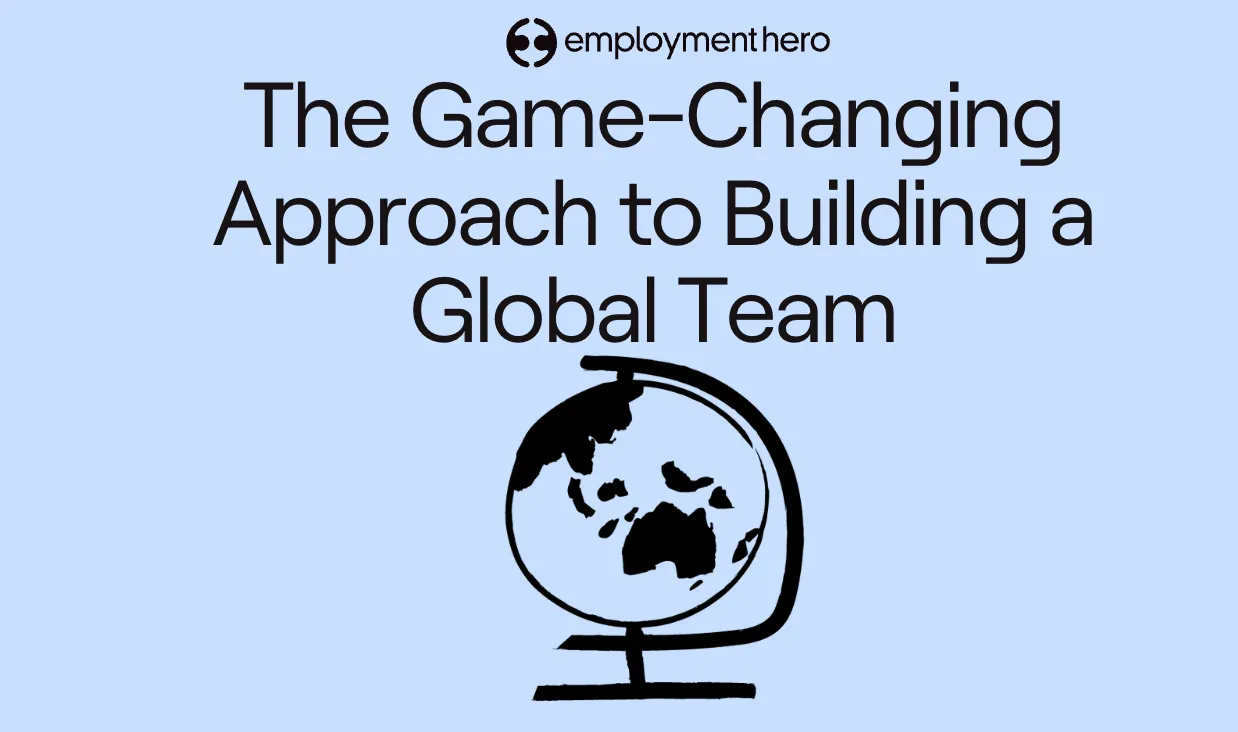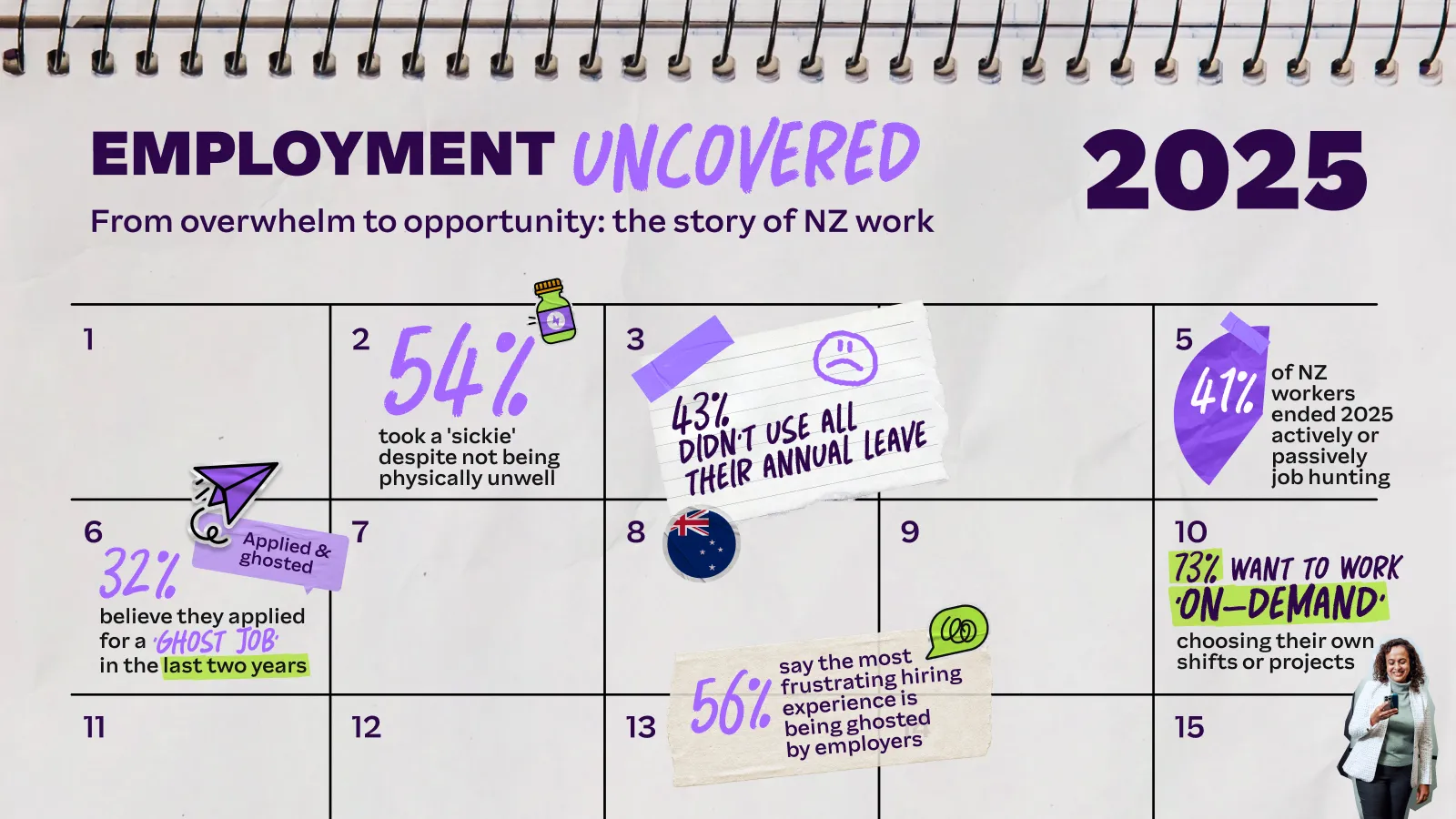Employment Hero Data Reveals Two-Speed Economy: Ongoing ‘Wageflation’ and Shrinking Hours

Contents
- Employment Hero’s August SmartMatch Employment Report reveals striking 6.2% moving average yearly wage growth across Australia, while median hours worked fell 2.4% month-on-month, signalling productivity challenges and early signs of ‘labour hoarding’
- Wage growth is significantly higher than the 4.1% reported by the ABS WPI in June, suggesting a hotter-than-reported jobs market contributing to sticky inflation
- ACT leads wage growth at 6.9%, while South Australia trails at 2.6%, revealing significant regional disparities and uneven economic growth across the nation
- Over the past year, employment growth among SMEs in WA and QLD have led the nation at 7.2% and 5.3% indicating Aussies are still moving to industrial hubs for work.
SYDNEY, AUSTRALIA – Embargoed, Thursday, September 19, 11:30AM: Employment Hero’s <August SmartMatch Employment Report> reveals a growing divide in Australia’s economy, where rising wages and shrinking hours are creating challenges for businesses across sectors and regions.
Despite a 6.2% annual moving average wage uptick in wages, productivity is suffering as businesses struggle to balance wageflation in August, with 2.4% fewer median monthly working hours in a bid to retain staff. This persistent wageflation is fuelling a hotter-than-reported jobs market, with verified wage growth among SMEs sitting well above the ABS wage growth figure of 4.1% reported in June.
The report is drawn from verified, aggregated real-time employment data from over 2 million employees and 300,000 businesses that are served by the Employment Hero platform globally. The figures are broken down by state, industry, age and employment type.
Wageflation sparking productivity concerns and “labour hoarding”
While wage growth is generally positive, the reduction in hours worked raises red flags. Businesses are grappling with balancing rising wages against declining productivity, with last quarter’s GDP indicating productivity per hour dropped 0.8% while the average unit cost of labour increased by 1.3%. As the RBA pointed out in recent commentary, inflationary pressures continue to build as the job market remains strong, despite the cutback in hours. This dynamic is contributing to “wageflation”, where wage increases outstrip economic output, adding fuel to inflation without corresponding productivity gains.
Small and medium-sized enterprises (SMEs) are bearing the brunt of rising wages, lopping employee hours despite the additional strain on their operations. This behaviour is an indicator of “labour hoarding” where businesses are desperately trying to retain staff in anticipation of future labour shortages and the sting of the cost of recruitment.
Regional and sectoral disparities: Australia’s two-speed economy
Australia’s recovery remains uneven across regions and sectors. The ACT led the nation with wage growth of 6.9%, while South Australia lagged behind at 2.6%, illustrating the stark contrasts in economic performance.
Meanwhile, sectors like Construction & Trade Services saw significant wage increases of 9.8%, while Healthcare & Community Services lagged at 3.7%, highlighting disparities in wage growth across industries. Annual employment growth continues to remain the highest in WA at 7.2% and QLD at 5.3%, indicating Australians are still migrating to industrial hotspots to find jobs, and increase their earning potential. Median hourly rates in these regions are growing annually at 3.1% and 5.0% respectively, with the median hourly rate in Construction & Trade Services sitting at $50.50 and Manufacturing, Transport & Logistics at $40.40.
State Breakdown – Median Hourly Rates
| State | Median Hourly Rate | MoM Change | QoQ Change | YoY Change |
| ACT | $43.40 | -0.2% | +1.8% | +6.9% |
| NSW | $43.30 | +0.1% | +2.9% | +4.9% |
| NT | $42.10 | +4.0% | +4.3% | -0.2% |
| QLD | $41.70 | +0.6% | +3.1% | +5.0% |
| SA | $39.30 | -0.3% | +3.7% | +2.6% |
| TAS | $35.90 | -1.0% | +2.0% | +3.5% |
| VIC | $41.40 | +0.4% | +2.3% | +4.4% |
| WA | $40.70 | +0.2% | +1.2% | +3.1% |
Industry Breakdown – Employee growth
| Industry | MoM Change | QoQ Change | YoY Change |
| Construction & Trade Services | 2.3% | 3.7% | 5.0% |
| Healthcare & Community Services | 0.1% | 0.5% | 6.8% |
| Manufacturing, Transport & Logistics | 0.3% | 1.4% | 3.6% |
| Retail, Hospitality & Tourism | 0.9% | 0.8% | 1.5% |
| Science & Technology | -0.3% | 1.2% | 2.7% |
Ben Thompson, CEO and Chief Economist at Employment Hero said Australia’s two-speed economy is becoming more pronounced, with inconsistent economic performance creating challenges for businesses across sectors and states alike:
“Wage growth is outpacing productivity, which is completely unsustainable, particularly for small businesses folding under the surging cost of operating.
“It’s becoming harder for business owners to strike the right balance between maintaining staff and managing wageflation, which means more Australians will inevitably be grappling with job insecurity and inconsistent wages. Wageflation over the long term creates problems on both sides of the market, particularly where a paypacket boost today could spell a layoff in the future.
“It’s also alarming to see the disparity between economic activity across the nation, particularly in unionised sectors like Healthcare and Construction who have the highest median wages in the country. While some regions and sectors are thriving, others are facing a lethargic economic where productivity ultimately suffers. When jobs growth across the country is uneven, this creates ripple effects for the communities who are most impacted,” he said.
Further information on the methodology behind Employment Hero’s SmartMatch Employment Report and additional metrics can be found in the report itself at https://smartmatch.employmenthero.com/resources/
Related Resources
-
 Read more: PEO vs. EOR: A guide to global hiring
Read more: PEO vs. EOR: A guide to global hiringPEO vs. EOR: A guide to global hiring
Learn the key differences between a PEO and an EOR. Discover why an EOR is the smarter, safer way to…
-
 Read more: How to build a global team without a local entity
Read more: How to build a global team without a local entityHow to build a global team without a local entity
Learn how to streamline your hiring and expand your NZ business globally with an Employer of Record (EOR) without the…
-
 Read more: Employment Uncovered: Inside the Story of New Zealand Work in 2025
Read more: Employment Uncovered: Inside the Story of New Zealand Work in 2025Employment Uncovered: Inside the Story of New Zealand Work in 2025
Inside the story of NZ work in 2025. From rising ‘sickies’ to hiring fatigue, see how Kiwi work patterns are…





















